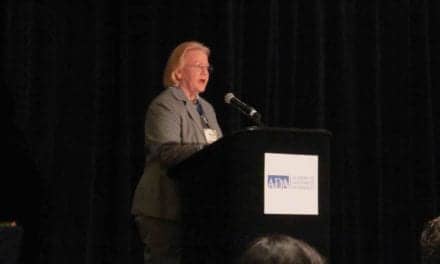Sheffield, UK — According to researchers from the University of Sheffield in the UK, people who are deaf benefit from better vision due to the fact that their retinas develop differently.
The research, which was funded by Action on Hearing Loss, formerly The Royal National Institute for Deaf People (RNID), was  published in the journal PlosONE. It suggests that the retina of adults who are born deaf or have an onset of deafness within the very first years of life develops the ability to capture more peripheral visual information than the retinas of hearing adults.
published in the journal PlosONE. It suggests that the retina of adults who are born deaf or have an onset of deafness within the very first years of life develops the ability to capture more peripheral visual information than the retinas of hearing adults.
Using retinal imaging data and correlating this with measures of peripheral vision sensitivity, a team led by Dr Charlotte Codina and Dr David Buckley from the University of Sheffield’s Academic Unit of Ophthalmology and Orthoptics, have shown that the retinal neurons in deaf people appear to be distributed differently around the retina to enable them to capture more peripheral visual information.
This means that in deaf people, the retinal neurons prioritize the temporal peripheral visual field, which is what a person can see in their furthest peripheral vision, ie, toward the ears.
Previous research has shown that deaf people are able to see further into the visual periphery than hearing adults, although it was thought the area responsible for this change was the visual cortex, which is the area of the brain that is particularly dedicated to processing visual information. This research shows for the first time that additional changes appear to be occurring much earlier in visual processing than the visual cortex, even beginning at the retina.
The team also found an enlarged neuroretinal rim area in the optic nerve, which shows that deaf people have more neurons transmitting visual information than in hearing people.
The findings were collected after the experts used a non-invasive technique called ocular coherence tomography (OCT) to scan the retina. OCT works in a similar manner to ultrasound, however, it uses light interference as opposed to sound interference.
Dr Charlotte Codina said in the press release, "This is the first time the retina has been considered as a possibility for the visual advantage in deaf people, so the findings have implications for the way in which we understand the retina to work. Our hope is that as we understand the retina and vision of deaf people better, we can improve visual care for deaf people, the sense which is so profoundly important to them."
The full paper entitled "Visual Advantage in Deaf Adults Linked to Retinal Changes" is available online.
SOURCE: University of Sheffield




